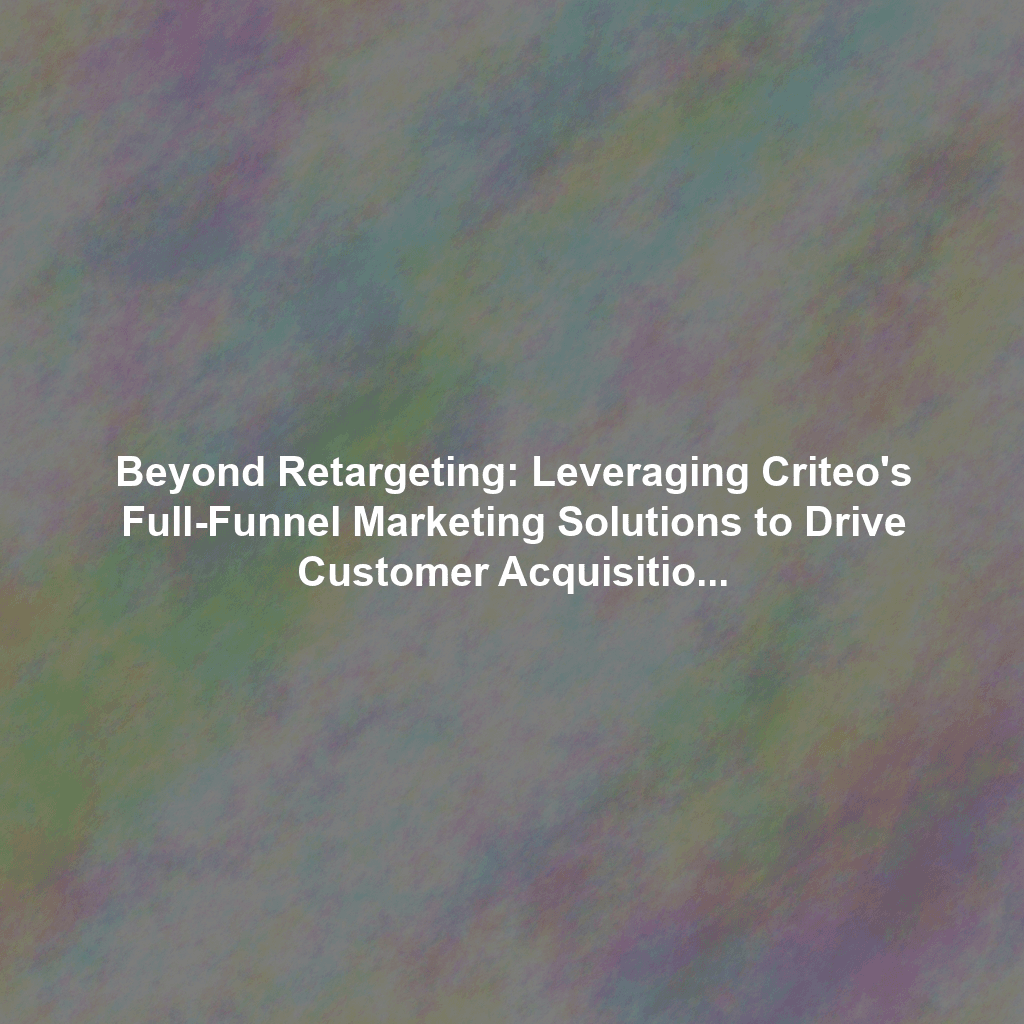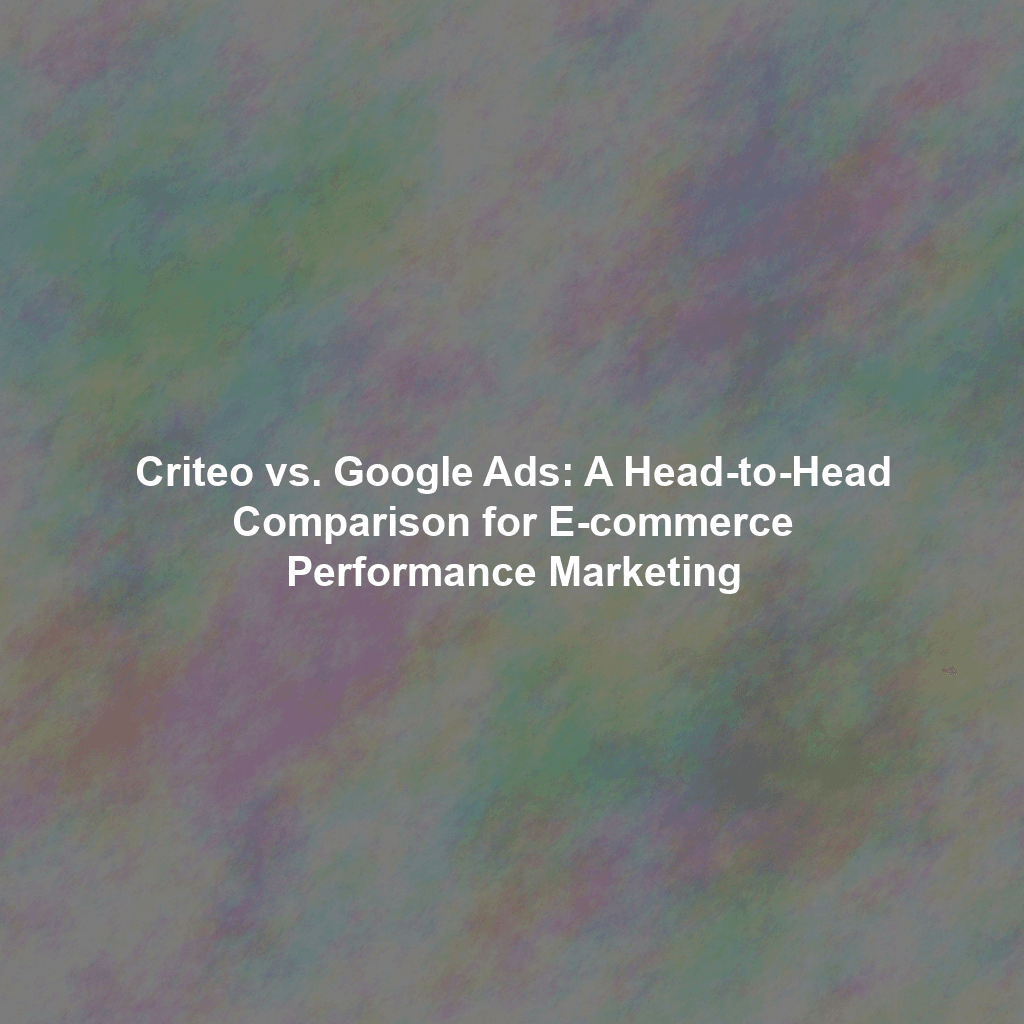Unlocking Criteo’s Acquisition Potential: Beyond the Retargeting Funnel
The traditional marketing funnel visualizes the customer journey from awareness to purchase.
Retargeting focuses primarily on the bottom of the funnel, engaging with users who are already familiar with your brand. But what about those potential customers who haven’t yet discovered your offerings? That’s where Criteo’s upper-funnel solutions come into play.
Prospecting: Reaching New Audiences with AI-Powered Precision
Criteo’s prospecting capabilities leverage its extensive shopper graph – a vast database of shopper behaviors and preferences – to identify and target users who are most likely to be interested in your products or services. This is significantly more sophisticated than simple demographic targeting. Criteo’s AI analyzes billions of data points to pinpoint users with similar purchase histories, browsing patterns, and interests as your existing customers. This “lookalike” modeling allows you to reach a highly qualified audience who are primed for conversion.
Example: An online retailer selling running shoes can use Criteo’s prospecting to target users who frequently visit running blogs, search for information on marathons, or have previously purchased athletic apparel from competing brands. The AI identifies patterns within these behaviors and finds other users who exhibit similar traits.
Audience Building: Cultivating Engagement from the Start
Criteo allows you to build custom audiences based on a variety of factors, including website behavior, CRM data, and app activity. These audiences can then be used to deliver targeted messages at different stages of the customer journey. Furthermore, Criteo integrates seamlessly with various data management platforms (DMPs) allowing for even more granular segmentation and targeting.
Strategies for Effective Audience Building:
- Segment by Product Category: Create separate audiences for users who have shown interest in different product categories, allowing for more relevant and personalized messaging.
- Leverage CRM Data: Upload your existing customer data to create lookalike audiences and identify new customers with similar profiles.
- Target In-Market Shoppers: Utilize Criteo’s in-market audiences to reach users who are actively researching and comparing products in your industry.
Combining Prospecting and Audience Building for Optimal Results
The real power of Criteo’s acquisition tools lies in the synergy between prospecting and audience building. By using prospecting to identify new potential customers and then adding them to your targeted audiences, you can create a continuous cycle of acquisition and engagement. This allows you to nurture leads from initial awareness to eventual purchase.
Specific Criteo Features and Strategies for Acquisition
Contextual Bidding: Reaching Shoppers in the Right Mindset
Criteo’s contextual bidding capabilities allow you to target users based on the content they are currently viewing. This ensures that your ads are relevant and timely, increasing the likelihood of engagement and conversion. Imagine displaying ads for camping gear to users who are reading articles about national parks or hiking trails. The contextual relevance makes the ad more appealing and less intrusive.
Dynamic Creative Optimization (DCO): Delivering Personalized Ad Experiences
DCO automatically optimizes ad creative based on user behavior and preferences. This ensures that each user sees the most relevant product recommendations, messaging, and offers. For prospecting, DCO is crucial as you don’t have prior interaction data. Criteo’s AI predicts which products a new user is most likely to engage with, increasing click-through rates and driving conversions.
App Install Campaigns: Acquiring Mobile Users with Precision
If you have a mobile app, Criteo’s app install campaigns can help you reach new users and drive downloads. These campaigns leverage Criteo’s shopper graph to target users who are most likely to be interested in your app, based on their past app usage, browsing history, and purchase behavior. Moreover, Criteo optimizes bidding based on post-install events, such as in-app purchases, providing more valuable user acquisition.
Best Practices for Criteo Acquisition Campaigns
- Define Your Target Audience: Clearly define your ideal customer profile to ensure that your prospecting campaigns are reaching the right users.
- Craft Compelling Ad Creatives: Use high-quality images and compelling copy that highlights the benefits of your products or services.
- A/B Test Your Campaigns: Experiment with different ad creatives, targeting strategies, and bidding strategies to optimize your campaign performance.
- Monitor Your Results: Track your key performance indicators (KPIs), such as click-through rate, conversion rate, and cost per acquisition, to identify areas for improvement.
- Leverage Criteo’s Reporting and Analytics: Criteo provides comprehensive reporting and analytics tools that allow you to track the performance of your campaigns and identify opportunities for optimization.
The Future of Full-Funnel Marketing with Criteo
Criteo’s evolution from a retargeting specialist to a full-funnel marketing platform marks a significant shift in the digital advertising landscape. By embracing its acquisition capabilities, marketers can unlock new opportunities to reach broader audiences, generate leads, and drive sustainable business growth. As Criteo continues to innovate and refine its AI-powered solutions, expect even more sophisticated and effective ways to connect with potential customers throughout the entire customer journey.
Conclusion
While Criteo’s retargeting capabilities remain valuable, understanding and leveraging its full-funnel marketing solutions, particularly prospecting and audience building, is essential for modern marketers looking to expand their reach and acquire new customers. By implementing the strategies and best practices outlined in this article, you can harness the power of Criteo to drive significant growth for your business.
 Skip to content
Skip to content

